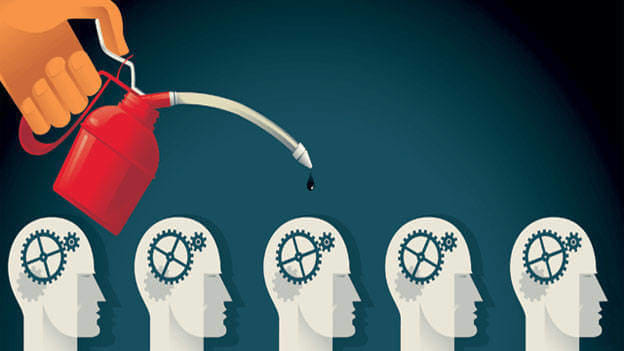Engineering learning for the users: preparing for the upcoming skill shift

Come 2021, businesses and leaders are well aware of the need to bring about a skill shift. The question now that needs to be answered is not why we need to bring a shift, but rather how do we bring about the desired skill shift in our organizations. How can you assess and identify skill gaps? How do you create a culture of continual learning that’s crisis and disruption proof? How can you meet the increasing demand for a skilled workforce through internal mobility? And most importantly, what do you need to be looking out for in the future?
In an exclusive virtual roundtable organized by People Matters in association with Degreed, industry leaders from across the SEA region deliberated on these questions and discussed how to prepare for the upcoming skill shift. In the second discussion in the series, it was highlighted that bringing learning and talent management together not only helps engage talent continuously but also helps prepare them for different kinds of roles for the future.
Here are a few highlights from the third discussion in the series.
Banking on digital skills for the future
Flexibility emerged as one of the skills that the Standard Chartered Bank is adding to its repertoire this year. While on the digital and data side, things will keep on changing, the bank’s key focus area would be on business decisioning at the back of data analytics-especially how the bank’s employees are able to leverage the data.
Another focus area would be on making things client-friendly and hence on design thinking to understand the client journey and design products/ experience around it. Thirdly, on skill development on the technical side, the bank will focus on risk management and what sustainability means from a bank’s perspective. Similarly, on the soft skills side, the leadership skills to manage a future workforce will also be a focus area as leadership is where things tend to break.
The balance between business customer vs HR customer approach
There is always this question as to how to bring the balance between listening to the customer and the employee. At Citi Group Malaysia, the focus is on customer obsession and understanding the customer’s sides, and how to train employees to become customer-centric. It’s not one or the other but is a constant circle of feedback and going back again to the customers and training employees accordingly.
A similar view was endorsed by the UMW Group which realized that the company needed to prepare its employees for changing customer needs, a need that was exacerbated by the pandemic. Predicting customer needs continues to remain a real challenge for companies because customers are being influenced by technology. And one way to doing this is to hearing out the employees who are close to the customer and giving them the ownership to solve the problem through their intellect or through peer intellect.
In this respect, to determine the current and future learning needs of employees, what Maxis Communications Bhd is doing is having targeted conversations with managers and leaders to understand the future skills they would require. And based on that intelligence, decide upon its build/buy/borrow/bounce strategy. What also helps to decide this strategy are the many learning platforms that are providing intelligence on what other organizations are doing to stay relevant.
The rising importance of leadership skills
Reiterating the focus on developing leadership, JLL APAC shared that it found that the best-ranked workplace environments had one common thing-a great leader. Hence proving the adage, great leadership makes the coffee tastes better. A great leadership means better employee experience which in turn translates to a better customer experience. It is thus important to hire and develop leaders and employees alike, who are great storytellers, have the ability to influence people, and can connect people with their purpose.
Internal mobility as a KPI
Another important insight that many leaders brought to the table was that to provide an impetus to learning and skilling, organizations need to institute internal hiring as a key KPI. Many organizations such as Shell have used it as a determinant in job rotation while developing talent internally.
Yet at the same, organizations also need to remember that not all learning can be measured. At the end of the day, learning is a developmental activity, and it has to be a part of the larger talent development strategy. While there is no debate that it is ultimately the employees who are responsible for their learning, Hitachi feels where organizations can help is to create an ecosystem where everyone can pursue the learning they desire and support the employee. Creating an all-encompassing rigid ecosystem is a strategy that has failed companies in the past. Where organizations need to focus on measuring it, is in the case of high potential employees, at leadership levels, and at strategic levels such as whilst achieving organizational goals such as sensitization activities.
Ultimately learning needs to be engineered for the users and organizations need to administer just the outcomes-which could be both in the short and the long time frame.

















